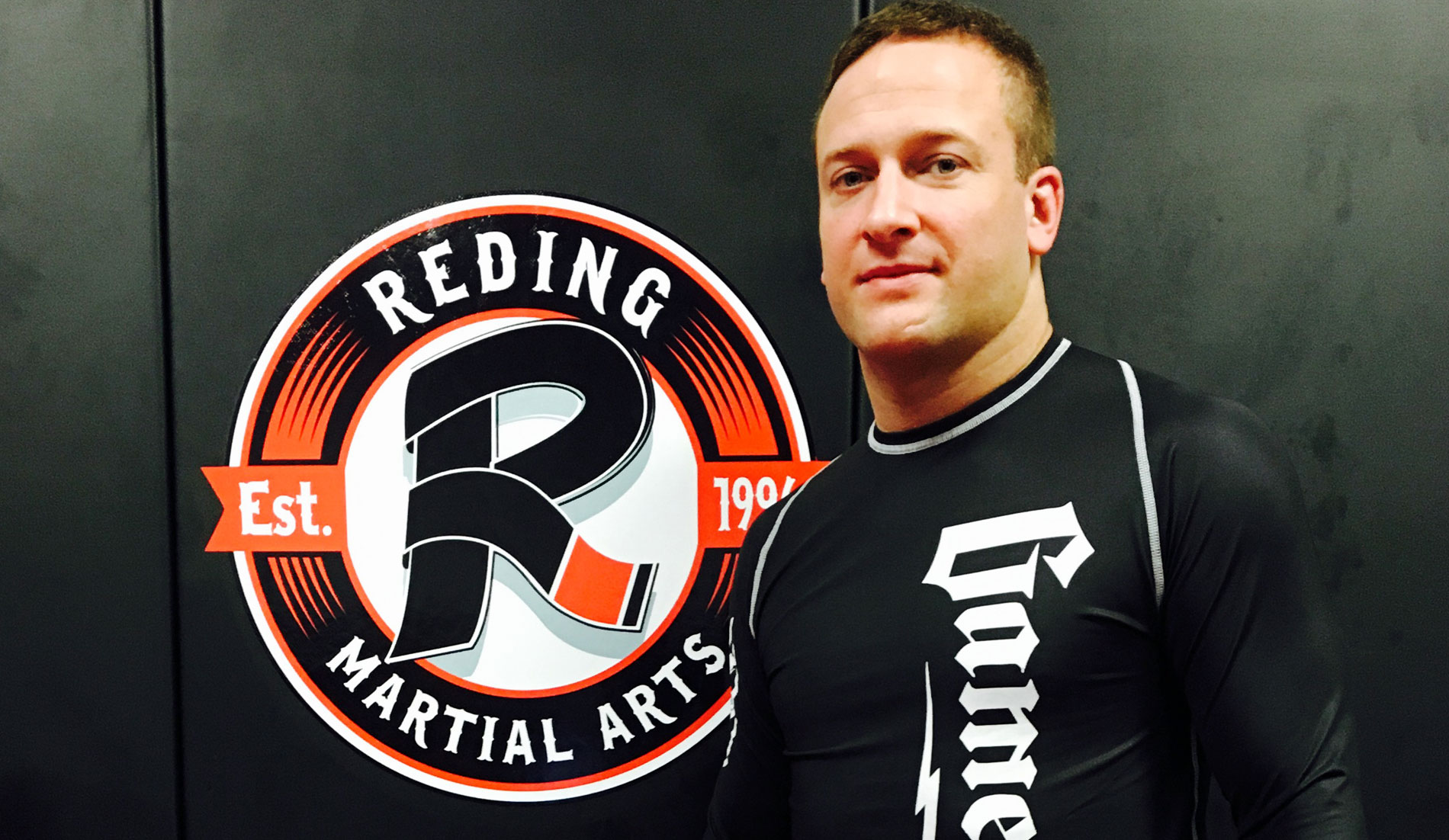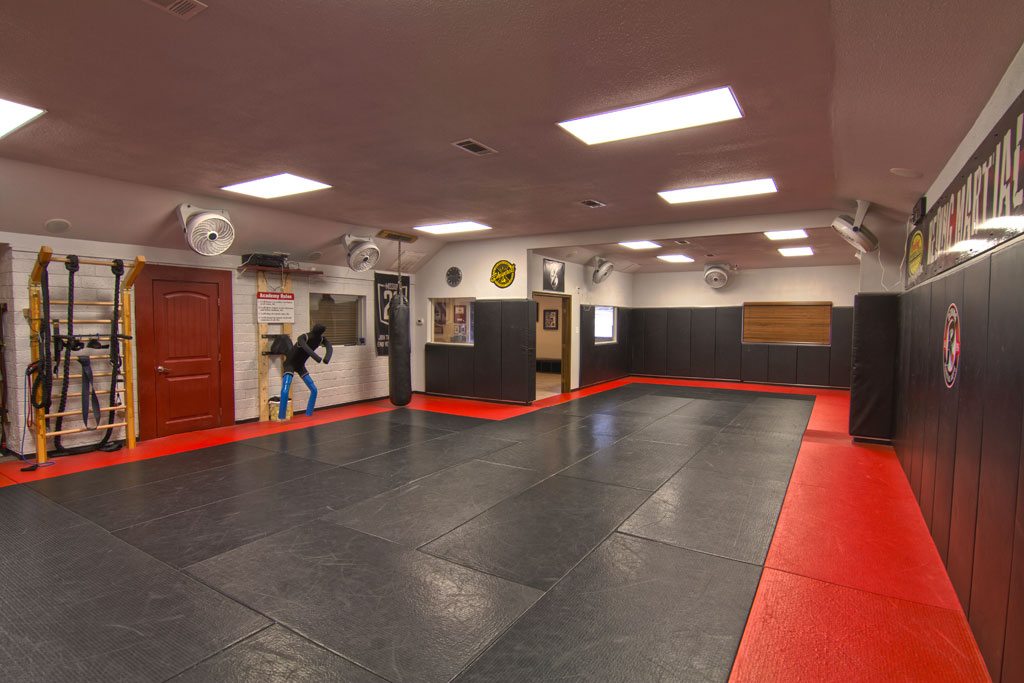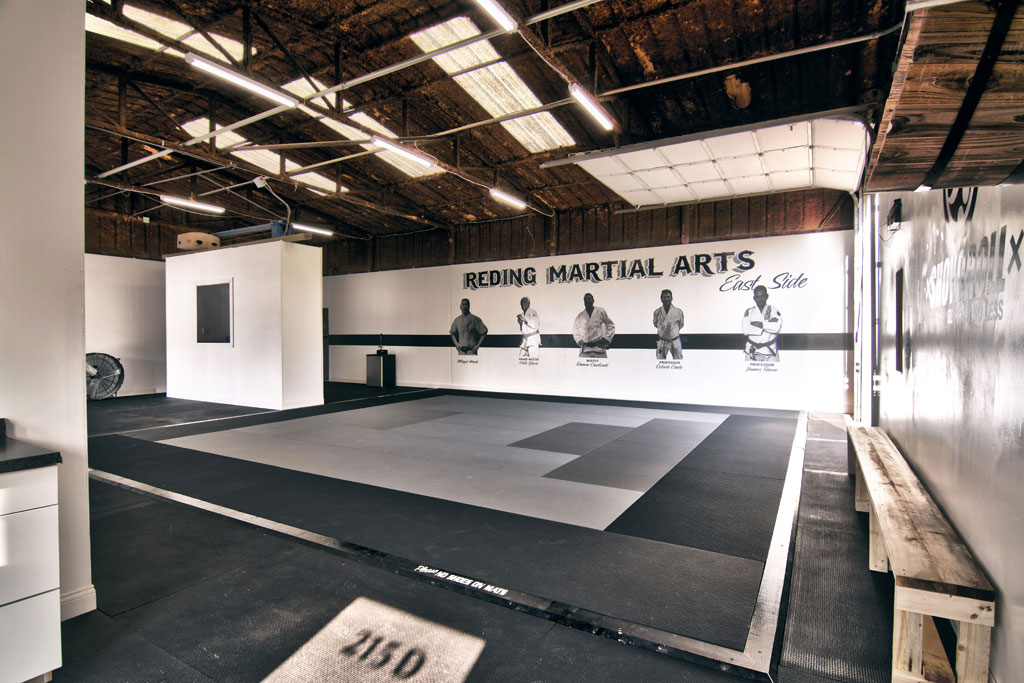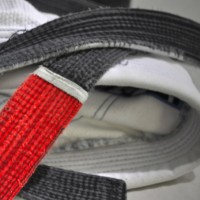About Reding Martial Arts
Mark Reding has been passionate about teaching martial arts for over 20 years. He constantly improves his skills in a variety of disciplines in order to share them with his students.
In 1991 at the age of 13, Mark started training in the martial arts under an instructor named Mike Woodson where he earned his 1st degree black belt in Shorin-Ryu Karate in 1995. In 1994, Mark started his training in American Kenpo Karate under Tim Bullot where he earned his first degree black belt in 1999. Mark became a senior professor of the arts by earning his seventh degree black belt in 2015. In 1996, Mark followed his dream of teaching others the art, and opened his own school. In 1999 Mark began his training in Jeet Kune Do Concepts and Brazilian Jiu-Jitsu under Jack McVicker. Mark earned his Phase I Instructorship in 2004. In 2012 Mark earned his black belt professorship in Brazilian Jiu-Jitsu under Professor James Brown. In 2015 he earned his 1st degree BJJ black belt under Professor Octavio Couto. in 2018 Mark earned his second degree BJJ black belt under Professor Jared Weiner out of Philly, and continues to train with him to this day. In 2017 Mark opened a second academy in Denton called Reding Martial Arts East Side.
Mark holds the following ranks
- Brazilian Jiu-Jitsu: 3rd Degree Black Belt (2021)
- American Kenpo Karate: 9th Degree Black Belt (2023)
- Jeet Kune Do: Full Instructor (2013)
- Muay Thai: Certified Instructor (2011)
- Shorin Ryu Karate: 1st degree black belt (1995)
Academies in Denton, Texas
Adult Martial Arts
At Reding, we use martial arts as a means for growth in all areas of our lives. Our students bring unique skills and backgrounds to the mat every week. Together, we hone our skills and share our experience. We're passionate about focusing our diversity into achieving our common goal: to become better martial artists, and thereby better people. We teach the following martial arts:
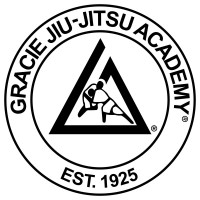
Brazilian Jiu-Jitsu
Developed in the 1930's, Brazilian Jiu-Jitsu (BJJ) is the relatively recent form of an ancient Japanese discipline. BJJ is primarily a ground art, vital in self-defense today when over 75% of all fights end up on the ground. Its name, meaning "gentle art", points to its emphasis: strategic positioning over your opponent rather than the more prevalent kick and punch. It does not rely on brute strength like many other martial arts, but instead, focuses on controlling an opponent through pressure, leverage, and holds.
When training Brazilian Jiu-Jitsu, we focus initially on students gaining dominant positions over their opponents while learning to escape from vulnerable ones. Once the basic positions and escapes have been established, we begin to teach submission techniques training toward ending conflict. In the process, students develop flexibility, physical and mental relaxation habits, stamina, and agility.
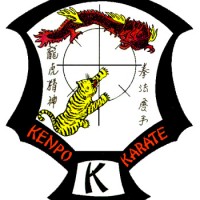
American Kenpo Karate
While Kenpo, the "Law of Fists" has been practiced for centuries, American Kenpo was developed in the early 1950's by Ed Parker as an effective self-defense martial art for modern times. Much of the Kenpo that he had been learning was limiting because of its ties to traditional practices and its assumption of historical circumstances.
American Kenpo is a system that addresses all types of attacks from all angles, including grabs, punches, kicks, holds, as well as multiple and armed attackers. It is comprised of the straight line movements of Japanese Karate and the circular techniques of Chinese Kung Fu, effectively blended to equip students in "The System of Motion." Relying on logic and practicality, American Kenpo is an explosive and highly effective discipline.
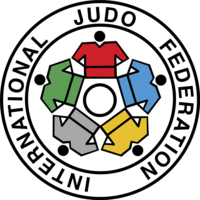
Judo
Judo is an unarmed modern Japanese martial art, Olympic sport (since 1964), and the most prominent form of jacket wrestling competed internationally. Judo was created in 1882 by Kano Jigoro as an eclectic martial art, distinguishing itself from its predecessors due to its removal of striking and weapon training elements. Judo rose to prominence for its dominance over established jujutsu schools in tournaments hosted by the Tokyo Metropolitan Police Department, resulting in its adoption as the department's primary martial art. A judo practitioner is called a "judoka".
Judo also spawned a number of derivative martial arts around the world, such as Brazilian jiu-jitsu, Krav Maga, sambo, and ARB. Judo also influenced other combat styles such as close-quarters combat (CQC), mixed martial arts (MMA), shoot wrestling and submission wrestling.
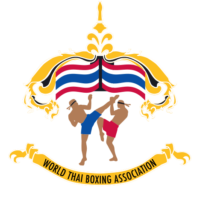
Muay Thai Boxing
Muay Thai, sometimes referred to as Thai boxing, is a combat sport that uses stand-up striking along with various clinching techniques. This discipline is known as the "art of eight limbs", as it is characterized by the combined use of fists, elbows, knees and shins. Muay Thai became widespread internationally in the late 20th to 21st century, when Westernized practitioners from Thailand began competing in kickboxing and mixed-rules matches as well as matches under Muay Thai rules around the world.
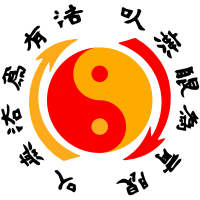
Jeet Kune Do Concepts
Jeet Kune Do was developed by Bruce Lee as an ever-evolving art that incorporates the best of other martial art disciplines without getting locked-in to the techniques of any single art. It is an art of response, teaching students to not over-plan a confrontation, but instead to respond to the moment, utilizing what is helpful and effective.
Lee trained fighters in four ranges: kicking, boxing, trapping, and grappling. At Reding Martial Arts, we train these ranges and emphasize the ability to move from one range to another with ease. We also incorporate traditional boxing, knife-fighting, and the stick-fighting techniques of Filipino Martial Arts.
Kids Martial Arts
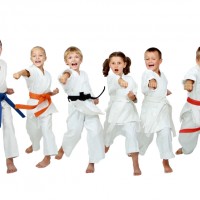
For ages 5 and up, our kids martial arts program teaches Brazilian Jiu Jitsu, Jeet Kune Do, and American Kenpo Karate. While certainly a step down in intensity from our adult classes, children are encouraged to develop at their own pace, while also being challenged physically and mentally.
Our students wear protective gear and are always closely monitored and instructed. Physically, the class trains the entire body and helps develop agility, balance, dexterity, and functional self-defense. Mentally, students learn patience, confidence, and persistence, and benefit socially as they interact with other students of various ages.
We have a family friendly waiting room, and parents are always welcome to sit in on our classes.
Private Lessons

